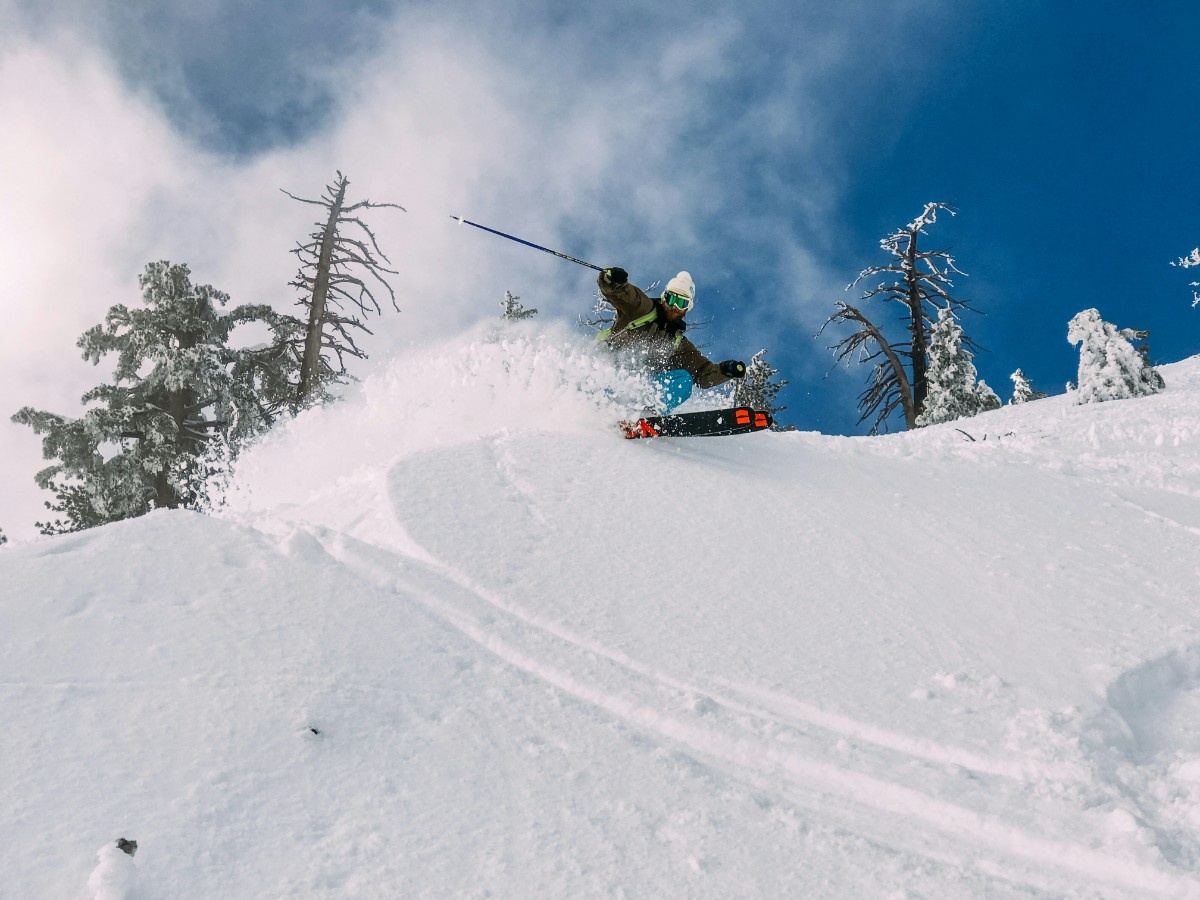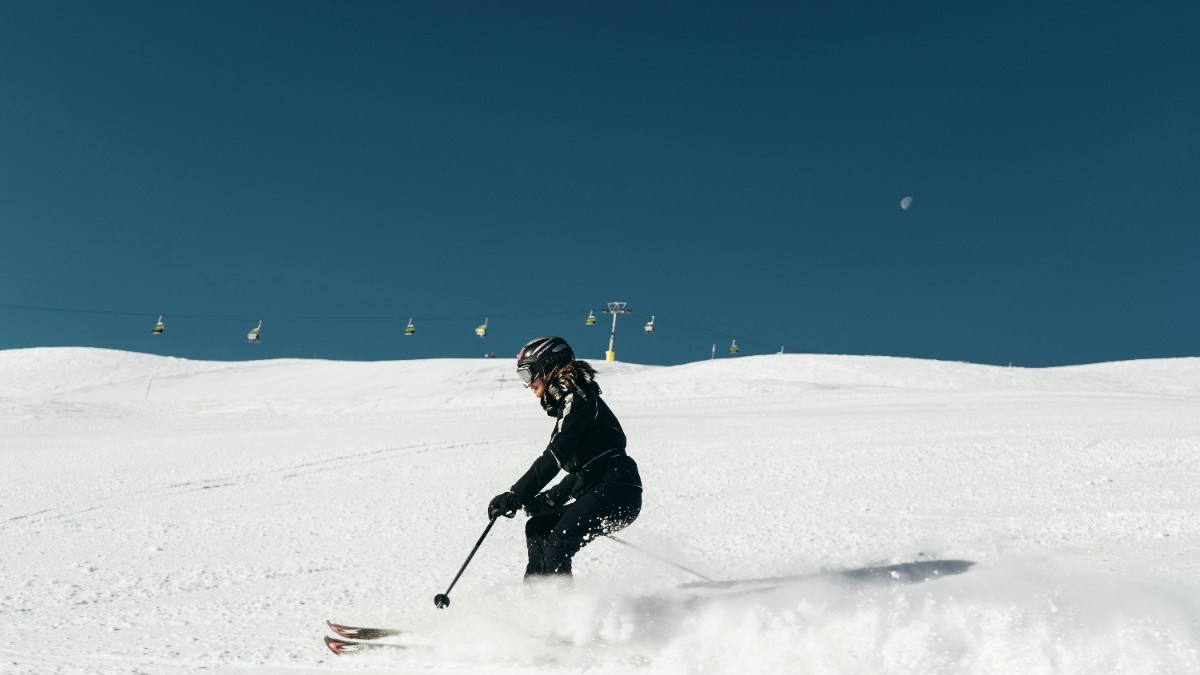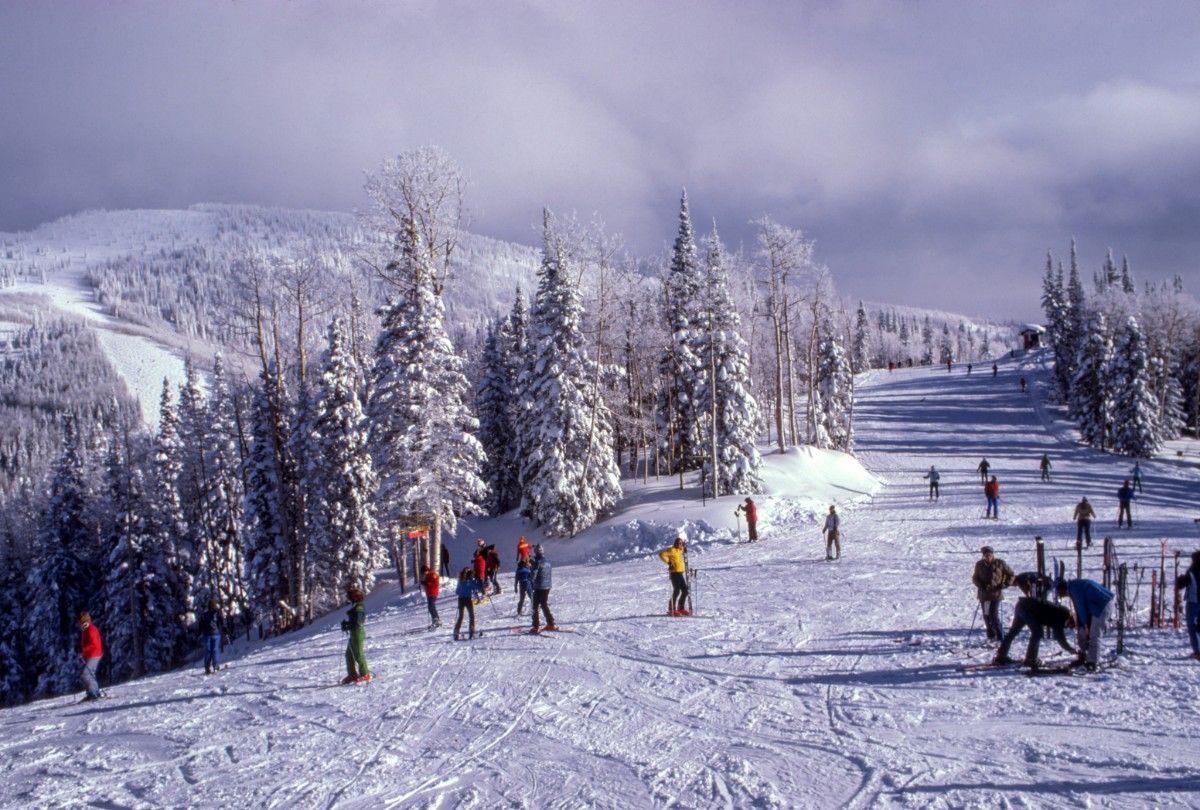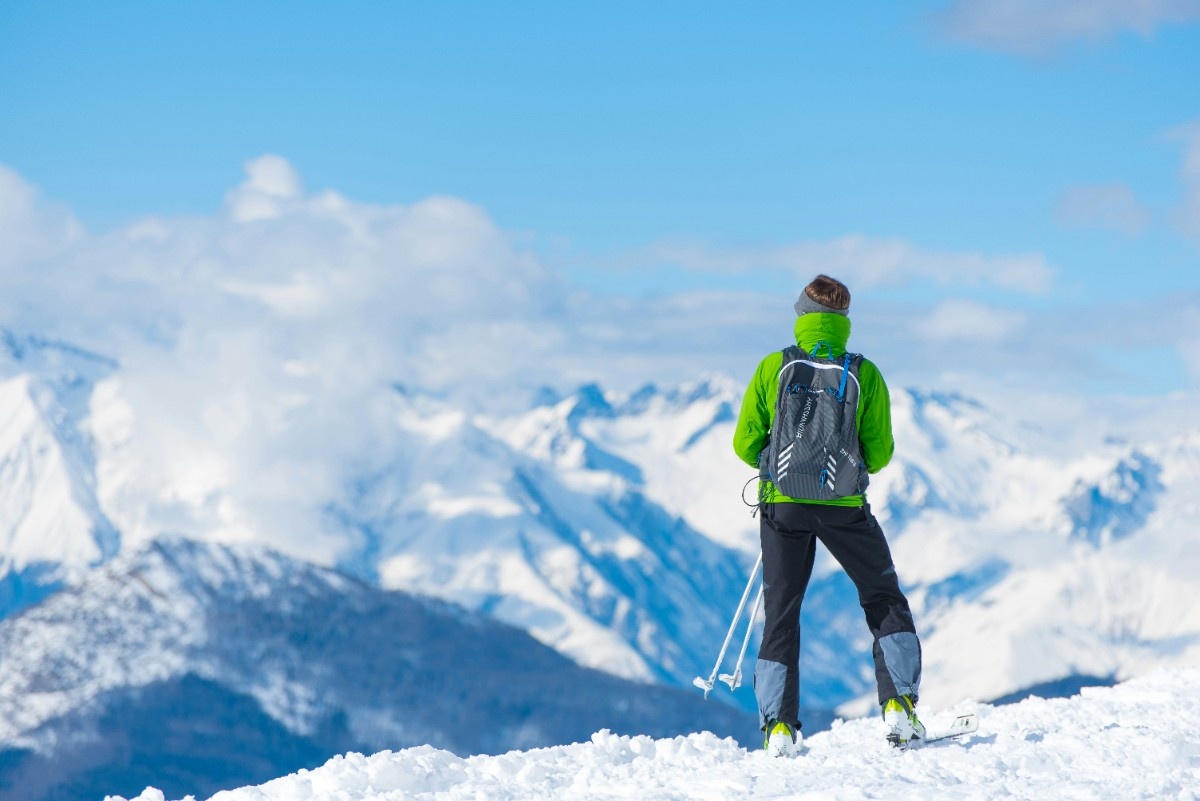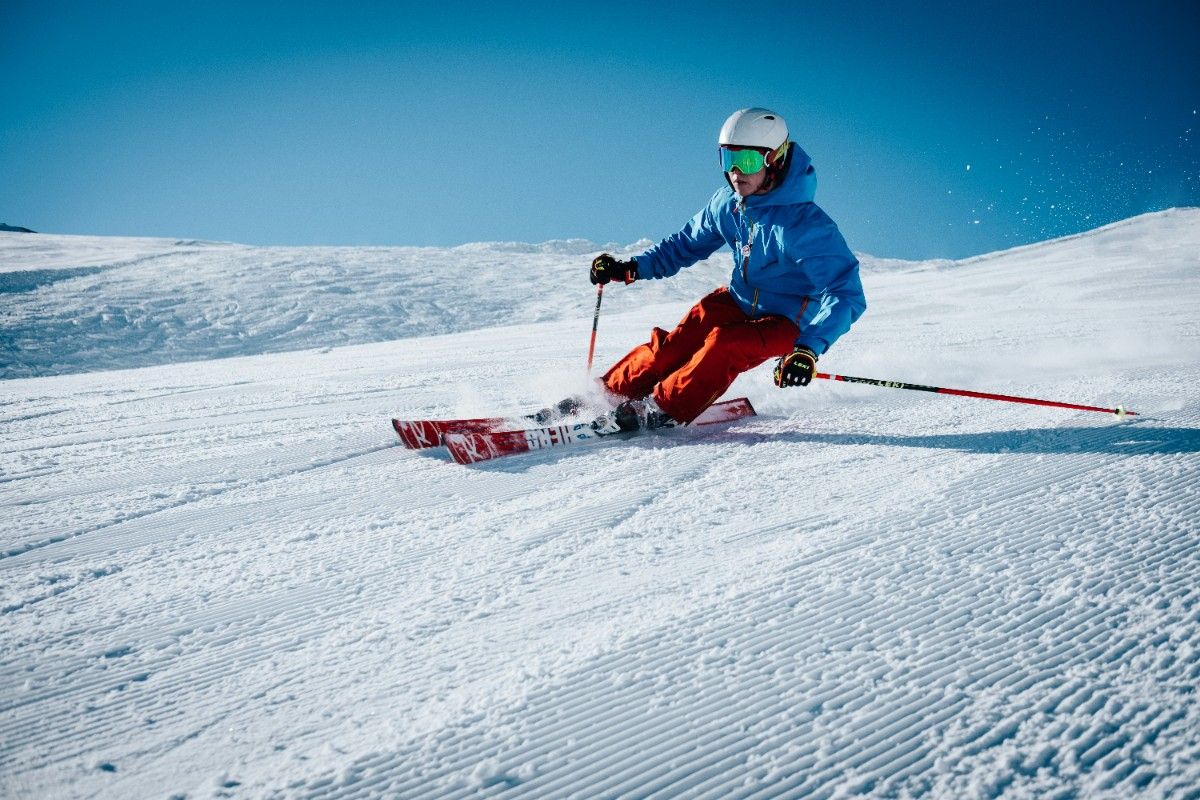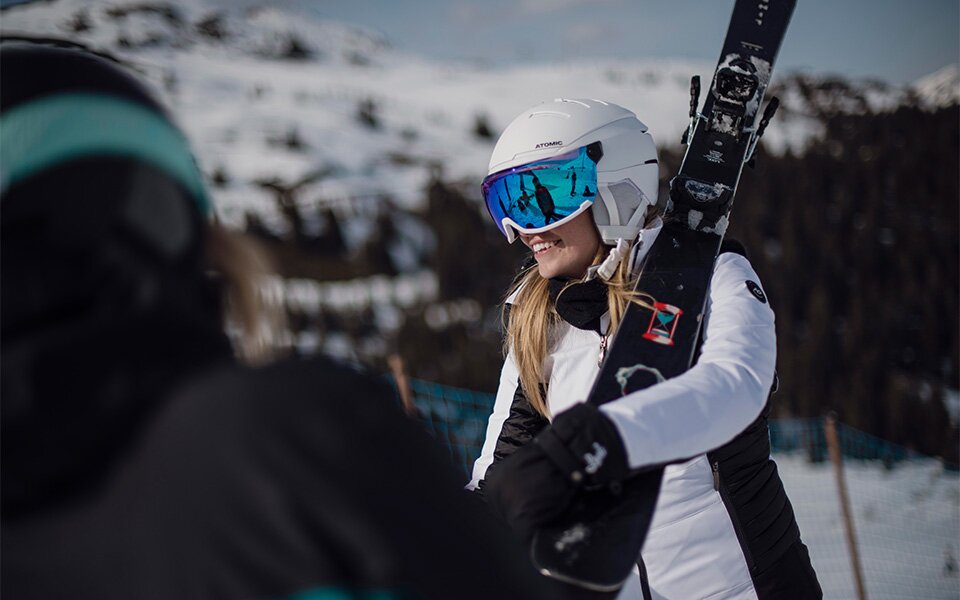Skiing
Getting Started: Essential Skiing Gear and Equipment
Skis and Bindings
When embarking on your skiing journey, selecting the right skis is paramount. For beginners, all-mountain skis are an excellent choice due to their versatility. These skis typically have a waist width between 80-95mm, providing a good balance between stability and manoeuvrability. The length of your skis should generally reach somewhere between your chin and the top of your head when stood upright.
Bindings are the crucial link between your boots and skis. They're designed to release in case of a fall, reducing the risk of injury. For beginners, it's advisable to choose bindings with a lower DIN setting, which determines the force required for release. As you progress and gain confidence, you can gradually increase this setting.
When renting or purchasing skis, ensure they're properly tuned and waxed. Well-maintained skis will provide better performance and a more enjoyable experience on the slopes. Some ski shops offer package deals that include skis, bindings, and even boots, which can be a cost-effective option for beginners.
Remember, as a beginner, you don't need to invest in top-of-the-line equipment. Focus on finding comfortable, well-fitting gear that suits your skill level. As you progress and develop your own skiing style, you can consider upgrading to more specialised equipment.
Ski Boots and Socks
Ski boots are arguably the most important piece of equipment you'll use. They transfer your movements to the skis and play a crucial role in control and comfort. When choosing ski boots, prioritise fit over any other factor. Boots that are too loose can lead to lack of control, while boots that are too tight can cause discomfort and even injury.
Modern ski boots often feature heat-mouldable liners that can be customised to fit your feet perfectly. This process, usually done at a ski shop, involves heating the liner and then wearing the boot while it cools and moulds to your foot shape.
The flex of a ski boot is another important consideration. Boot flex is typically indicated by a number, with higher numbers indicating stiffer boots. As a beginner, you'll want to start with a softer flex (around 60-80 for men, 50-70 for women) which allows for more forgiveness and is generally more comfortable.
Don't overlook the importance of good ski socks. These specialised socks are designed to provide warmth without bulk, wick away moisture, and prevent blisters. Avoid wearing multiple pairs of socks, as this can actually lead to colder feet and decreased performance. Instead, invest in a few pairs of high-quality ski socks made from materials like merino wool or synthetic blends.
Ski Clothing and Accessories
Proper ski clothing is essential for comfort and safety on the slopes. Start with a good base layer made from moisture-wicking material to keep you dry. Merino wool or synthetic fabrics are excellent choices.
Over your base layer, wear an insulating mid-layer such as a fleece or light down jacket. This layer traps warm air close to your body. The outermost layer should be a waterproof and breathable ski jacket and ski trousers. Look for items with a high waterproof rating (at least 10,000mm) and good breathability.
Ski gloves or mittens are crucial for protecting your hands from cold and moisture. Mittens generally provide more warmth, while gloves offer better dexterity. Some skiers prefer a combination of both, wearing thin glove liners inside mittens for the best of both worlds.
A ski helmet is a non-negotiable piece of safety equipment. Modern helmets are lightweight, comfortable, and provide crucial protection against head injuries. Many also feature adjustable ventilation to help regulate temperature.
Ski goggles protect your eyes from glare, wind, and flying snow while enhancing visibility in various light conditions. Look for goggles with anti-fog technology and consider models with interchangeable lenses for different weather conditions.
Don't forget accessories like a neck gaiter or balaclava to protect your face from cold winds, and hand and foot warmers for extra comfort on particularly cold days.
Lastly, consider investing in a good quality backpack designed for skiing. These often have specific compartments for safety gear, hydration systems, and your extra layers, making it easy to carry everything you need for a day on the slopes.
Mastering the Basics: Skiing Techniques for Beginners
Getting Comfortable on Skis
The first step in learning to ski is getting comfortable with the feeling of having skis on your feet. Start on flat ground and practice walking and sliding with your skis. This will help you get used to the length and weight of the skis.
Next, learn the 'snowplough' or 'pizza' position. This involves pointing the tips of your skis together while pushing the tails apart, forming a wedge shape. This position helps control your speed and is the foundation for your first turns.
Practice moving into and out of the snowplough position while stationary. Then, on a very gentle slope, try sliding down in the snowplough position. Focus on keeping your weight evenly distributed over both skis and your hands forward for balance.
As you gain confidence, practice using the snowplough to control your speed. The wider you make your 'pizza', the more you'll slow down. Gradually work on narrowing your snowplough as you become more comfortable with the speed.
Remember to keep your knees slightly bent and your weight centred over your skis. Looking ahead to where you want to go, rather than at your feet, will help with balance and direction.
Learning to Turn
Once you're comfortable with the snowplough and can control your speed, it's time to learn how to turn. Turning is essential for controlling your direction and navigating the slopes safely.
Start with snowplough turns. Begin sliding down a gentle slope in the snowplough position. To turn left, put slightly more weight on your right ski and point your left knee inward. For a right turn, do the opposite. Practice making both left and right turns, focusing on smooth, gradual movements.
As you progress, try linking your turns together. This involves shifting your weight from one ski to the other as you change direction. Start with wide, slow turns and gradually make them narrower and faster as your confidence grows.
Remember to keep your upper body facing downhill as much as possible, with your shoulders level and your hands forward. This helps maintain balance and prepares you for more advanced techniques later on.
Riding the Lift and Slope Etiquette
Learning to use the ski lift is an important skill for any beginner. Start with surface lifts like magic carpets or button lifts before progressing to chair lifts. When using a chair lift, approach the loading area in a straight line, look over your shoulder as the chair approaches, and sit down when it touches the backs of your legs.
When unloading, keep your ski tips up, stand up, and ski away from the unloading area promptly. If you fall, try to clear the area quickly to make way for the next chair.
Understanding and following slope etiquette is crucial for your safety and the safety of others. Always ski in control and be able to stop or avoid other people or objects. People ahead of you have the right of way, so it's your responsibility to avoid them.
When stopping, move to the side of the run where you can be easily seen from above. Always look uphill before starting off or merging onto a trail. Obey all signs and warnings, and never stop where you obstruct a trail or are not visible from above.
Be aware of the International Ski Federation (FIS) Rules of Conduct, which form the basis of responsible behaviour on the slopes. These rules cover aspects like speed control, overtaking, and what to do in case of an accident.
Remember, skiing is meant to be enjoyable. Take breaks when you need them, stay hydrated, and don't push yourself beyond your comfort zone too quickly. With practice and patience, you'll soon be confidently cruising down the slopes!
Choosing the Perfect Ski Resort: Top Destinations and What to Look For
Factors to Consider When Selecting a Ski Resort
Choosing the right ski resort can make or break your skiing holidays. The perfect resort for you will depend on various factors, including your skill level, budget, and what you're looking for in a ski experience. One of the primary considerations should be the suitability of the terrain for your skiing ability. Resorts typically provide a breakdown of their runs by difficulty: green for beginners, blue for intermediates, and black for advanced skiers. Consider not just the percentage of runs at your level, but also how they're distributed across the mountain.
Snow conditions are another crucial factor. While no resort can guarantee perfect snow, some areas are more reliable than others. Resorts at higher altitudes or in regions known for consistent snowfall are good bets. Many resorts now offer extensive snowmaking capabilities to supplement natural snow, which can be particularly important in the early and late season.
The size of the ski area is also worth considering. Larger ski areas generally offer more varied terrain and the ability to ski a different part of the mountain each day, which can be particularly appealing for longer stays. However, smaller resorts can have their own charm, often being less crowded and having a more intimate, authentic feel.
Lift infrastructure is another key factor. Modern, high-speed lifts can significantly increase your time on the slopes by reducing waiting times and speeding up ascents. Some resorts have invested heavily in state-of-the-art lift systems, including heated seats and wind bubbles for comfort in harsh weather.
Accommodation options vary widely between resorts. Some offer ski-in/ski-out lodging, allowing you to step out of your hotel or chalet directly onto the slopes. Others may require a short walk or shuttle ride to the lifts. Consider what type of accommodation suits your needs and budget, whether it's a luxury hotel, a self-catering apartment, or a traditional mountain chalet.
The après-ski scene is an integral part of the skiing experience for many people. If you enjoy socialising after a day on the slopes, look for resorts known for their lively bars and restaurants. However, if you prefer a quieter experience, there are plenty of more low-key resorts where the focus is purely on skiing.
For families, look for resorts with good childcare facilities, ski schools with English-speaking instructors, and family-friendly activities both on and off the slopes. Some resorts offer special family lift pass deals or free skiing for children under a certain age.
Top Ski Resorts Around the World
While personal preferences play a significant role in determining the "best" ski resort, some destinations consistently rank among the world's top ski resorts. In the European Alps, resorts like Chamonix in France, St. Anton in Austria, and Zermatt in Switzerland are legendary for their extensive ski areas, challenging terrain, and picturesque alpine villages.
Chamonix, nestled at the foot of Mont Blanc, is particularly famous for its off-piste skiing and challenging runs. It's a paradise for advanced skiers and mountaineers, but also offers plenty of options for intermediates and beginners. The resort town itself is full of character, with a car-free centre and a wide range of accommodation options.
St. Anton, part of Austria's Arlberg region, is known for its challenging runs and lively après-ski scene. The resort offers over 300km of marked ski runs and 200km of off-piste itineraries, making it a paradise for advanced skiers. However, it also caters well to intermediates with plenty of blue runs.
Zermatt, with its iconic views of the Matterhorn, offers year-round glacier skiing and a car-free village that epitomises alpine charm. The resort boasts 360km of pistes spread across three interconnected ski areas, with runs suitable for all levels. Zermatt is also known for its gourmet mountain restaurants and sophisticated village atmosphere.
In North America, resorts like Whistler Blackcomb in Canada and Vail in Colorado, USA, are among the most popular destinations. Whistler Blackcomb boasts the largest ski area in North America, with over 200 marked runs across two mountains. It offers terrain for all abilities and a bustling resort town with plenty of off-slope activities.
Vail, with its vast back bowls and meticulously groomed front-side runs, is renowned for its diverse terrain and upscale amenities. The resort offers 5,289 acres of skiable terrain, including seven legendary back bowls spanning seven miles. Vail Village is designed to resemble a European alpine town, with high-end shops, restaurants, and accommodation.
For those seeking a unique skiing experience, Japan's Hokkaido region, particularly resorts like Niseko, has gained international fame for its incredible powder snow. The quality and quantity of snow here is legendary, with an average of 15 metres falling each season. Niseko offers a blend of excellent skiing conditions, beautiful scenery, and the opportunity to experience Japanese culture and cuisine.
Planning Your Ski Trip
Once you've chosen your resort, careful planning can help ensure a smooth and enjoyable ski holiday. Start by booking your accommodation and travel well in advance, especially if you're planning to visit during peak periods like Christmas or school holidays. Many resorts offer package deals that include accommodation, lift passes, and sometimes even equipment rental, which can offer good value for money.
Consider purchasing travel insurance that covers winter sports, as medical treatment and evacuation from the mountain can be extremely costly. It's also worth checking what's included in your lift pass. Some resorts offer passes that include access to multiple ski areas or additional activities like ice skating or swimming.
If you're new to skiing or visiting a resort for the first time, consider booking lessons in advance. Group lessons can be a cost-effective way to improve your skills and meet other skiers, while private lessons offer more personalised instruction.
Don't forget to factor in the cost of equipment rental if you're not bringing your own. Many people find it more convenient to rent equipment at the resort, especially when travelling long distances. Some rental shops offer the option to pre-book, which can save time on arrival.
Remember, a successful ski trip is about more than just finding the best slopes. It's about finding a resort that matches your skiing ability, budget, and personal preferences, and then planning carefully to make the most of your time there. Whether you're looking for challenging runs, powder-filled bowls, family-friendly facilities, or a vibrant après-ski scene, there's a ski resort out there that's perfect for you.
Advanced Skiing Techniques: Taking Your Skills to the Next Level
Perfecting Your Carving Technique
Carving is a fundamental skill for advanced skiers, allowing for clean, efficient turns with minimal skidding. To improve your carving, focus on increasing your edge angle by rolling your ankles and knees into the turn. Keep your weight centred over the middle of your skis and try to maintain constant pressure throughout the turn.
Start by practicing on well-groomed, moderately steep slopes. As you initiate a turn, gradually increase the edge angle of your skis by tipping them onto their sides. You should feel the edges grip the snow, and your skis will naturally want to turn in an arc. The key is to resist the urge to skid or pivot the skis, instead letting the sidecut of the ski do the work.
As you become more comfortable with carving, work on varying your turn shape and size. Short, quick carves require more aggressive edge angles and faster weight transfers, while long, sweeping carves allow for a more gradual build-up of forces. Practice transitioning smoothly between different types of carved turns.
Remember that carving requires well-tuned skis with sharp edges. Regular maintenance of your equipment is crucial for optimal performance. Many advanced skiers find that slightly stiffer skis with a more pronounced sidecut are beneficial for carving, but it's important to choose skis that match your skill level and the type of terrain you typically ski.
Mastering Moguls and Bumps
Mogul skiing is often seen as the ultimate test of an advanced skier's abilities. Moguls are bumps that form on ski runs, either naturally from skier traffic or artificially created. Skiing moguls requires a combination of short turns, absorption, and precise timing.
The key to mogul skiing is to use your legs like shock absorbers, extending as you go over the top of each bump and flexing as you descend into the trough. Keep your upper body stable and facing downhill, using pole plants to help time your turns. Your knees and ankles should be doing most of the work, while your hips and upper body remain relatively still.
Start practicing on smaller, more uniform moguls and progress to larger, more challenging fields as your skills improve. Focus on developing a rhythm, linking your turns smoothly from one mogul to the next. As you become more advanced, you can start to incorporate techniques like absorption turns, where you "absorb" the mogul by retracting your legs as you go over it, allowing for faster, more direct lines through the bumps.
Remember that mogul skiing is physically demanding. It requires strong legs, good cardiovascular fitness, and quick reflexes. Off-season training, including exercises to build leg strength and agility, can significantly improve your mogul skiing performance.
Off-Piste and Backcountry Skiing
Off-piste skiing, also known as backcountry or out-of-bounds skiing, is another area where advanced skiers can challenge themselves. This involves skiing on ungroomed, natural snow outside of the marked resort boundaries. Off-piste skiing requires not only advanced skiing skills but also knowledge of snow conditions, avalanche safety, and backcountry navigation.
One of the key skills in off-piste skiing is the ability to read the terrain and snow conditions. Different types of snow require different techniques. In deep powder, for example, you'll need to keep your weight more centred or even slightly back on your skis to keep the tips from diving under the snow. Make wider, more rounded turns and use a bouncing motion to help your skis pop out of the snow at the end of each turn.
Safety is paramount in off-piste skiing. Always carry appropriate safety equipment, including an avalanche transceiver, probe, and shovel, and know how to use them. It's highly recommended to take an avalanche safety course before venturing into the backcountry. Many resorts offer guided off-piste experiences, which can be a great way to start exploring beyond the marked runs safely.
When skiing in the backcountry, you'll often need to "earn your turns" by hiking or skinning up to reach untouched powder. This requires additional equipment like climbing skins and potentially specialised touring bindings. The effort is often rewarded with pristine snow and a sense of adventure that can't be matched within resort boundaries.
Advanced Equipment Considerations
As your skiing skills advance, you may find that your equipment needs change. Many advanced skiers prefer stiffer, more responsive skis that can handle high speeds and aggressive turns. The right ski for you will depend on your preferred terrain and skiing style. For example, if you enjoy carving on groomed runs, you might opt for a narrower ski with a pronounced sidecut. If you spend most of your time in deep powder, a wider ski with more rocker (upturned tip and tail) might be more suitable.
Ski boots are arguably the most important piece of equipment for advanced skiers. They need to provide precise control and power transmission to the skis. Many advanced skiers opt for stiffer boots with a higher flex rating. Custom boot fitting, including heat-mouldable liners and custom footbeds, can significantly improve performance and comfort.
Don't neglect your safety equipment as you advance in your skiing. A high-quality ski helmet is essential, especially if you're venturing into more challenging terrain or higher speeds. Look for helmets that meet current safety standards and consider features like MIPS (Multi-directional Impact Protection System) for enhanced protection.
Ski goggles with interchangeable lenses can be invaluable for advanced skiers who ski in a variety of conditions. Some high-end goggles now offer photochromic lenses that automatically adjust to changing light conditions.
For those interested in backcountry skiing, additional equipment like avalanche safety gear, touring bindings, and climbing skins become essential. It's worth investing in high-quality gear and taking the time to learn how to use it properly.
Remember, while having the right gear is important, it's your skill and experience that matter most. The best equipment in the world won't make you a better skier overnight, but it can help you make the most of your abilities and enjoy your time on the mountain to the fullest.
The Art of Après-Ski: Embracing the Social Side of Skiing
The Origins and Evolution of Après-Ski
Après-ski, French for "after ski," is an integral part of ski culture that extends the joy of a day on the slopes well into the evening. The concept originated in the Alps during the 1950s, where skiers would gather in mountain huts to warm up and share stories after a day of skiing. Today, après-ski has evolved into a cultural phenomenon that can range from casual drinks at a slope-side bar to elaborate parties featuring live music and dancing.
The style of après-ski can vary greatly depending on the resort and the country. In Austria, for example, après-ski often involves lively bars with singers or DJs playing traditional Austrian folk music alongside modern hits. Skiers might find themselves dancing on tables in their ski boots to the sound of accordion-heavy tunes. In France, après-ski might be a more relaxed affair, perhaps enjoying a vin chaud (mulled wine) or génépi (a herbal liqueur) at a charming mountainside chalet. Swiss après-ski often combines elements of both, with options ranging from cosy mountain huts serving fondue and local wines to high-energy bars and clubs in resorts like Verbier or St. Moritz.
In North America, après-ski tends to be more casual and family-friendly. Many resorts offer a range of activities suitable for all ages, from outdoor fire pits for roasting marshmallows to indoor game rooms and movie nights. That's not to say you can't find a lively bar scene – resorts like Aspen and Whistler are renowned for their après-ski nightlife.
Japan, a rising star in the global ski scene, puts its own unique spin on après-ski. After a day of skiing in Hokkaido's legendary powder, you might find yourself soaking in an onsen (natural hot spring) before enjoying sake and sushi. Some Japanese resorts also offer cultural experiences as part of their après-ski, such as tea ceremonies or calligraphy classes.
The Social Aspects of Après-Ski
One of the beauties of après-ski is its inclusivity. Whether you're a beginner who's spent the day on the bunny slopes or an expert who's been carving up black diamond runs, everyone is welcome to join in the après-ski festivities. It's a time when the hierarchies of skill level dissolve, and the shared love of mountain life takes centre stage.
Après-ski is also a great opportunity to meet fellow skiers and potentially make plans for the next day. Many friendships have been formed over a shared pitcher of beer or a fondue pot. It's a chance to exchange tips about the best runs, share stories of spectacular wipeouts, or get recommendations for ski instructors or equipment rentals.
For those who prefer a more low-key après-ski experience, many resorts offer alternatives to the bar scene. This might include spa treatments to soothe tired muscles, yoga classes, or simply curling up with a book by a roaring fire in your chalet or hotel lobby. Some resorts have started to offer more unique après-ski experiences, such as stargazing sessions, ice sculpture workshops, or even skidoo tours.
Family-friendly après-ski has also become more prevalent. Many resorts now offer activities like tubing, ice skating, or movie nights that the whole family can enjoy together after a day on the slopes. Some resorts even have dedicated children's après-ski programmes, allowing parents to enjoy some adult time while the kids are entertained.
Après-Ski Cuisine and Drinks
Food plays a central role in après-ski culture. After burning thousands of calories on the slopes, skiers are often ravenous by the end of the day. Traditional après-ski fare tends to be hearty and comforting – think fondue, raclette, and goulash in the Alps, or nachos, wings, and burgers in North America. Many resorts also offer healthier options for the more health-conscious skier.
Drinks are, of course, another key component of après-ski. While beer is a perennial favourite, each region has its specialties. In Austria, you might try a Jägertee (a potent mix of rum, wine, tea, and spices) or a Schnaps. In Italy, an Aperol Spritz or local wine might be the drink of choice. In Canada, a Caesar (similar to a Bloody Mary but made with clamato juice) is a popular option.
It's worth noting that while alcohol is often a part of après-ski culture, it's important to drink responsibly, especially considering the altitude and the need to safely navigate back to your accommodation, potentially in snowy conditions. Many resorts now offer alcohol-free versions of popular après-ski drinks for those who prefer to abstain.
Après-Ski Etiquette and Tips
When it comes to après-ski attire, comfort is key. While some high-end resorts might have dress codes for certain venues, in general, casual and warm is the way to go. Many skiers transition straight from the slopes to après-ski, so ski clothes are entirely acceptable. As the evening progresses, some might change into more comfortable clothing, but the atmosphere remains decidedly informal.
It's worth noting that après-ski customs can vary between countries and even between resorts. In some places, it's customary to buy rounds for your table, while in others, individual tabs are more common. Some resorts have a more rowdy après-ski scene, while others are more subdued. If you're unsure, it's always a good idea to observe the locals or ask for advice at your accommodation.
While après-ski is undoubtedly fun, it's important to remember that you'll likely be skiing again the next day. Overdoing it can lead to a less than enjoyable experience on the slopes. Many seasoned skiers recommend setting a cut-off time for après-ski to ensure you're well-rested for another day of skiing.
In conclusion, après-ski is much more than just a post-skiing drink – it's a cultural phenomenon that enhances the overall ski holiday experience. Whether you prefer a lively bar scene, a relaxing spa treatment, or a family-friendly activity, there's an après-ski experience for everyone. It's a time to unwind, socialise, and celebrate the joys of mountain life. So next time you're on a skiing holiday, don't rush back to your accommodation after your last run – take some time to embrace the art of après-ski and create memories that will last long after the snow has melted.
Related Articles

Let us know you agree to cookies
We use marketing, analytical and functional cookies as well as similar technologies to give you the best experience. Third parties, including social media platforms, often place tracking cookies on our site to show you personalised adverts outside of our website.
We store your cookie preferences for two years and you can edit your preferences via ‘manage cookies’ or through the cookie policy at the bottom of every page. For more information, please see our cookie policy.

